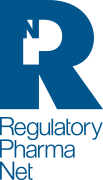The worldwide literature monitoring is a regulatory requirement for all the Marketing Authorisation Holders (MAHs) and it should be performed for as long as the Marketing Authorisation (MA) of a medicinal product is active, whether the product is on market or not. The goal is to identify Individual Case Safety Reports (ICSRs) and any possible changes to the benefit-risk profile, particularly in relation to the detection of new safety signals or emerging safety issues.
MAHs should perform a systematic literature review of widely used reference databases no less frequently than once a week, unless the active substances of their products are present in the list of publications monitored by the European Medicines Agency (EMA) pursuant to Article 27 of Regulation (EC) No 726/2004. However, the MAHs need to continue to monitor all other medical literature not covered by the literature reference databases applied for the service by the EMA.
The Medical Literature Monitoring (MLM) services of EMA started on September 1st, 2015. The full monitoring list contains more than 400 active substance groups. The EMA is responsible for monitoring selected medical literature and for entering identified reports of suspected adverse reactions in EudraVigilance.
The clock for reporting starts (Day 0) with awareness of a publication containing the minimum information for reporting. All the suspect adverse reactions found by the EMA in the listed medical literature, both serious (EU and non-EU) and non-serious (EU only), are not transmitted to MAHs, indeed they are transmitted to EudraVigilance and National Competent Authorities (NCAs) and made available to MAHs via EudraVigilance. The MAHs, however, should download and include these ICSRs in their safety database. They can provide an assessment of the case, describe a disagreement with, and/or alternatives to the diagnoses given by the primary source and/or indicate the degree of suspected relatedness of each medicinal product to the adverse reactions. Where the MAH identifies a literature case entered by EMA to be a duplicate of the company’s individual case, which was previously submitted to EudraVigilance, there is a need to send a follow-up with the world-wide unique case identifier to EudraVigilance.
In addition to the activities above, MAHs should also monitor the scientific and medical publications in local journals in countries where medicinal products have a MA.
Reports of suspected adverse reactions from the scientific and medical literature, including relevant published abstracts from meetings and draft manuscripts, should be reviewed and assessed by MAHs to identify and record possible ICSRs.
The reports found during the literature screening (both from widely used reference databases and local literature) and relevant to suspect adverse reactions observed in the Italian territory should be submitted to the Italian Health Authority (AIFA) through the Italian Pharmacovigilance Network (RNF), within 15 days or 90 days depending on the seriousness, starting from the Day 0. Once entered into the RNF, the report is automatically sent to Eudravigilance, thus no further submission from the MAH is required.
RPN is ISO 9001 certified and has standard operating procedures in place describing the literature monitoring process and the management of ICSRs. During all these years RPN has been supporting the clients in several pharmacovigilance activities, including the monitoring of the international and national literature and the relevant submission to the authorities according to the legislation requirements and the agreements with the clients.




